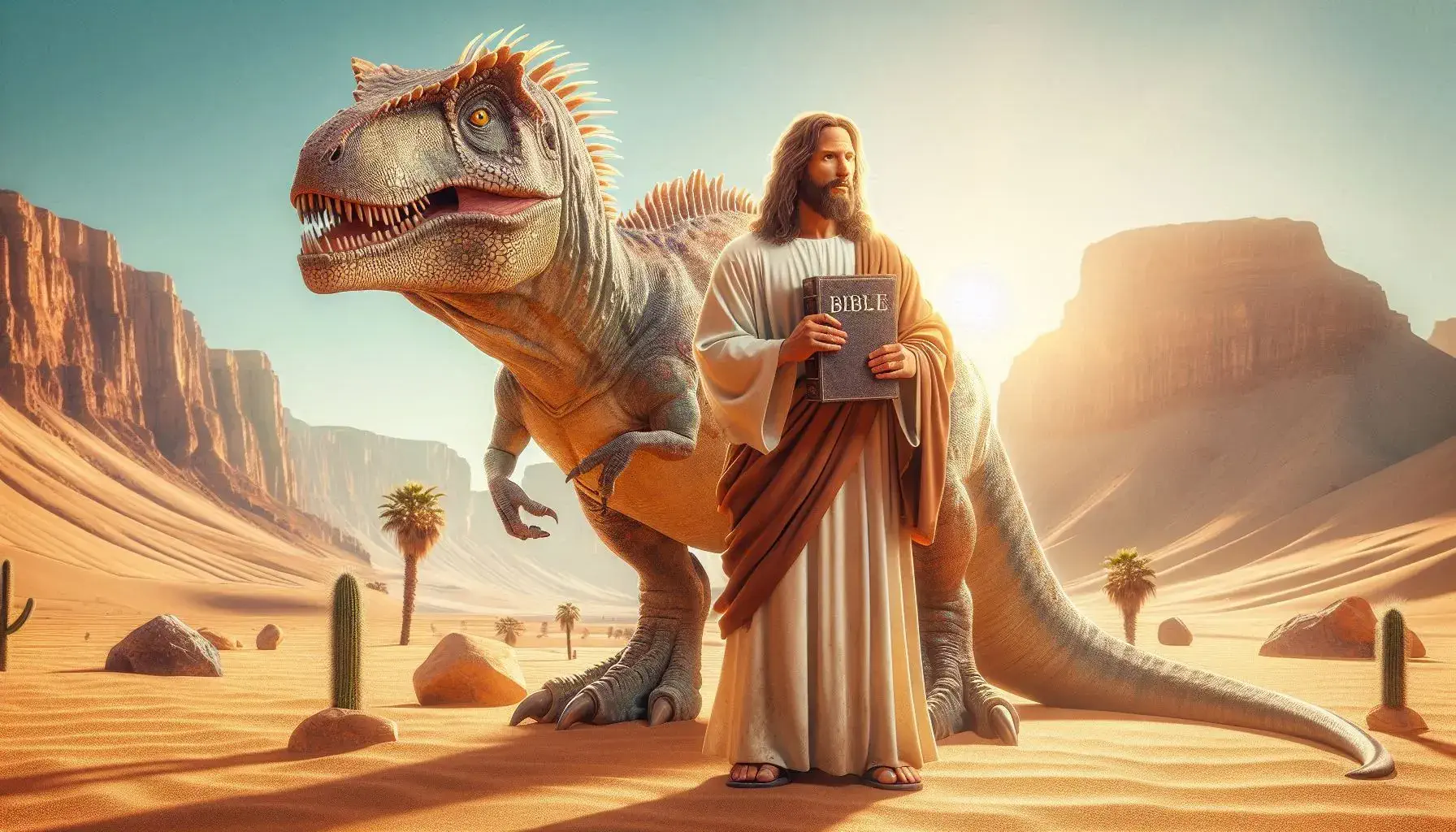People are fascinated by dinosaurs, and understandably so—they were incredible creatures. The three most common questions are:
1. Does the existence of dinosaurs argue against creationism, especially young earth creationism?
2. Are the biblical references to the leviathan and behemoth talking about dinosaurs?
3. What happened to the dinosaurs?
1. Dinosaurs and Young Earth Creationism
Young earth creationists, who hold that the Earth is just thousands of years old, were first challenged by the finding of dinosaur remains, which are dated to millions of years ago. Some early proponents of the young earth creationist theory even implied that these fossils were fake. Thoughts have changed throughout time, and many young earth creationists now provide justifications for how dinosaurs fit into their theory of the universe. For instance, they contend that God created dinosaurs, who coexisted with humans until they became extinct.
Dinosaurs do not refute creationism, even if young earth creationists are mistaken about how old the Earth is. Dinosaurs fit well into the paradigm of old earth creationists, who hold that the Earth is billions of years old. It’s also critical to remember that accepting evolution does not entail accepting an ancient world.
Fascinating data also points to a possible coexistence between humans and dinosaurs. Legends of enormous reptiles or dragons are found in many ancient societies, and dinosaur-like petroglyphs, artifacts, and sculptures can be found. These parallels between many cultural contexts can point to a common reality.
2. Dinosaurs in the Bible
Dinosaurs may be mentioned in the Bible, particularly in the book of Job. A beast named Behemoth is described in Job 40:15–18. Its traits are unidentifiable with those of any known current mammal. It sounds a lot like a dinosaur when you read about it—eating grass like an ox, possessing great power, and having a tail like a cedar tree. In a similar vein, Job 41 speaks of the Leviathan, which likewise resembles a dinosaur. These descriptions in Job may pertain to dinosaurs if young earth creationists are right about humans and dinosaurs coexisting.
3. What Happened to the Dinosaurs?
The reason behind the demise of the dinosaurs is the subject of several theories, none of which has been shown to be true. Young earth creationists, old earth creationists, theistic evolutionists, and Darwinian evolutionists all hold different views. The scientific community cannot agree upon a reason for their departure, and the Bible says nothing about it either.
The Entire Image
The question of whether the Bible can be believed is more important than whether or not dinosaur facts are correct. Dinosaur existence has been used to refute biblical creationism for millennia. Nonetheless, proponents of both young earth and old earth creationism have produced tenable justifications. Strong evidence also points to a possible coexistence between humans and dinosaurs.
The basic realities that God is the Creator, people are fashioned in His image, and we need a Savior remain unchanged even if the secular scientific theory that humans and dinosaurs diverged millions of years is true. Though they are intriguing, it’s necessary to recognize the relative importance of dinosaurs.
A Fascinating Hypothesis
As an aside, there’s a fascinating idea linking dinosaurs to a biblical event. The “sons of God” married with human women in Genesis 6 to create the enormous race known as the Nephilim. There are theories that suggest fallen angels may have interbred with animals to produce enormous reptiles akin to dinosaurs. Though it seems like the storyline for the upcoming Jurassic film, it’s a thought-provoking concept.
In conclusion, dinosaurs do not refute the central tenets of creationism, despite the fact that they are intriguing and pose significant problems. Creationists have produced explanations for both young and ancient earth that are consistent with their worldviews, and the existence of dinosaurs continues to be evidence of the amazing diversity of God’s creation.
📌FOR FURTHER STUDY
📖 Dinosaurs, Dragons, and the Bible
